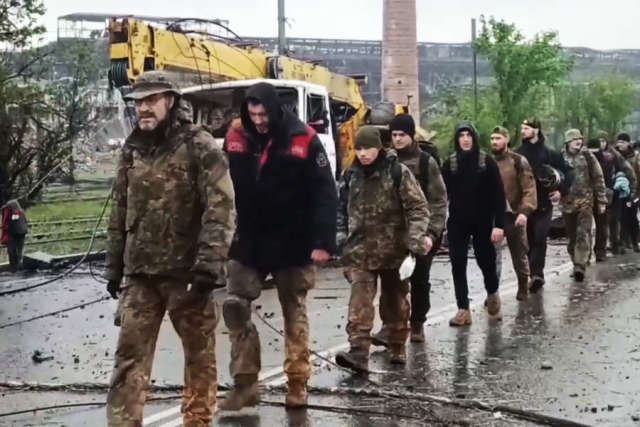For what reasons did the Russian army prefer the siege of Azovstal to the assault
Servicemen of the Ukrainian army and other military formations who have taken refuge on the territory of the Azovstal plant are surrendering en masse. According to the Ministry of Defense of the Russian Federation, as of May 19, more than 1,700 people had already laid down their weapons. "Newspaper.Ru" figured out what the Azovstal plant was in military terms and why the Armed Forces of the Russian Federation and the DPR army did not storm it.
Russian President Vladimir Putin ordered to cancel the storming of Azovstal on April 21 during a meeting with Defense Minister Sergei Shoigu. The Russian leader explained this decision by the need to preserve the lives and health of the Russian military. At the same time, he instructed to block the territory of the industrial zone "so that the fly does not fly".
"I consider the proposed assault inappropriate. I order to cancel. This is the case when we have to think - we always have to think, but in this case even more so - about preserving the lives and health of our soldiers and officers. There is no need to climb into these catacombs," Putin said.
The head of the Defense Ministry previously reported that, if necessary, the assault would take "about three to four days."
"Theoretically, it was quite feasible - after powerful artillery training, targeted missile strikes, the use of heavy depth charges capable of "folding" the multi-storey basements of the plant. The heaviest "Tulip" mortars in the world were pulled up to the plant. The DPR fighters, Russian army units and Chechen special forces, which are part of the Rosgvardiya, were ready for the attack. With such a composition, the operation would be successful, but bloody," he told the newspaper.Ru" member of the Board of Military Experts Sergey Belousov.
"The Azovstal plant, like the Ilyich plant, is not some kind of garment factory within several buildings that can be captured by a riot squad. This is a whole city that stretches for ten kilometers along the coast of the Sea of Azov. There are only about fifteen production workshops, there was a residential area, shops, food and industrial warehouses, its own access railway tracks. And also extensive basements with a depth of five to seven floors. There the division and even the corps could be hidden if desired," he told the newspaper.Ru" military expert, native of Mariupol, reserve Colonel Oleg Chetenov.
The expert noted that the seizure of Azovstal by assault groups would inevitably lead to losses and could continue indefinitely for a long time. "It's like the war in the Odessa catacombs, which no one could capture in all the wars," Chetenov added.
The commander of the "Vostok" brigade of the DPR, Alexander Khodakovsky, in turn, in an interview with the portal "Ukraine.Ru" said that the Ukrainian military entrenched on Azovstal decided to surrender after lengthy negotiations with representatives of certain special services. "They told them: you will be mercilessly crushed, and all this will end with you being gone. Instead of you there will be one big mass grave," Khodakovsky said.
Sergei Belousov added that the "turning point" for the Azovstal garrison was the understanding that the official Ukrainian authorities were "condemning the Ukrainian military to a heroic death."
"The soldiers realized that Kiev had abandoned them and was not going to save them. The Ukrainian government needs them only as dead heroes, not as living people. Pay attention to the Ukrainian information agenda now.
Or the commander of the 36th brigade of Marines, Colonel of the Armed Forces of Ukraine Vladimir Baranyuk. Zelensky awarded him the title of "Hero of Ukraine" while he was holding the defense in Mariupol. After he was captured, they forgot about him in a moment," Belousov concluded.
Victor Sokirko

